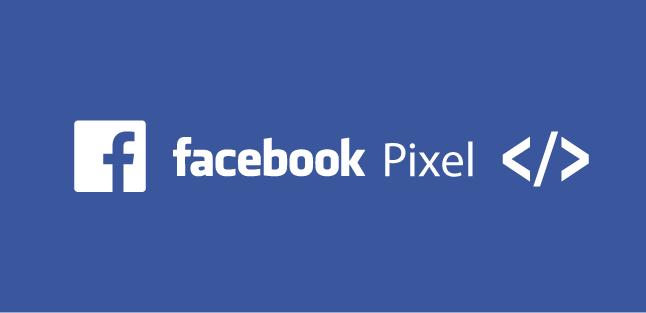Facebook tracking for beginners…. Why should we use a Facebook pixel? What is it and how does it work?
In this article, we answer the most basic questions about Facebook Tracking.
It helps you understand what a Facebook pixel is and shows you how to set one up. If you’re new to Facebook advertising, or even just new to advertising on the internet, chances are you’ve come across the term “Facebook pixel” and have no idea what it is.
A Facebook pixel is a small piece of code that you can insert into your website to track visitors’ actions. By tracking these actions, you can then create targeted ads that show up in people’s Facebook newsfeeds based on their behavior on your site.
The Facebook pixel can be used to track a wide variety of events, such as when someone views a product on your site, adds a product to their cart, or completes a purchase. You can also use the pixel to create custom audiences for your ads based on people’s actions on your site. For example, you could create a custom audience of people who have visited your site in the last 30 days but have not made a purchase.
You can also use the Facebook pixel to track conversions, which is when someone takes an action that you’ve defined as valuable, such as signing up for your email list or creating an account on your site. Conversion tracking allows you to see how effective your ads are at driving the desired action.
If you’re running any kind of online business
What is Facebook Pixel?
Facebook pixel is an analytics tool that allows you to measure the effectiveness of your advertising by understanding the actions people take on your website. You can use pixel data to:

-Build audiences for ad targeting
-Find new customers
-Measure the results of your ads
-Optimise your ad delivery to get better results
To set up a Facebook pixel, you’ll need to add a piece of code to your website. Once you’ve done that, you can start tracking events and collecting data.
How to set up Meta Pixel?

Facebook tracking can be a little daunting for beginners. However, it’s worth taking the time to understand how it works so that you can make the most of its potential. So, what is a Facebook pixel? And how do you set one up?
A Facebook pixel is a piece of code that you insert into your website. It allows you to track conversions, measure ad performance, and build audiences for remarketing purposes.
To set up a Facebook pixel, you’ll need to add the code to your website header. This can be done using a plugin like Insert Headers and Footers if you’re using WordPress. Once the code has been added, you can then start creating events and adding them to your website pages.
There are 9 types of events that you can track: Lead, CompleteRegistration, Contact, CustomizeProduct, Donate, FindLocation, InitiateCheckout, Purchase, Schedule. To find out more about each event type and how to set them up, check out this article from Facebook.
Once you’ve set up your events, you can start creating audiences based on them. For example, you could create an audience of people who have completed a purchase event or an audience of people who have visited your website in the last 30 days.
You can then use these audiences for remarketing purposes; showing them targeted ads that are relevant to their interests. This is an extremely effective way to boost conversions and sales on your website.
Unlock your Ad's Conversions & Audience with Facebook Pixel
Facebook tracking can be a powerful tool for driving conversions and understanding your audience. By installing a Facebook pixel on your website, you can collect data on your website visitors and use that information to create more targeted ads. You can also use the pixel to track conversions, so you can see which of your ads are resulting in sales or other desired actions.
If you’re new to Facebook tracking, or just need a refresher, this guide will walk you through everything you need to know. We’ll cover what a Facebook pixel is, how to set it up, and how to use it to unlock your ad’s potential. Let’s get started!
How to Master the Facebook Pixel?
If you’re running a business, it’s important to understand how the Facebook pixel works and how to set it up correctly. The Facebook pixel is a code that you insert into the header of your website. It allows you to track conversions, remarket to people who have visited your site, and build custom audiences for future advertising.
To setup the pixel, you’ll need to add some code to the header of your website. You can do this yourself or hire a web developer to do it for you. Once the code is added, you’ll need to create a custom audience in Facebook Ads Manager and install the pixel on your website.
Once the pixel is installed, you can start tracking conversions and building custom audiences. To track conversions, you’ll need to create a conversion goal in Facebook Ads Manager. This can be done by going to Tools > Conversion Tracking > Create Conversion Goal.
There are four types of conversion goals: leads, purchases, key page views, and adding items to a cart. Choose the type of conversion that best fits your business objectives and then follow the instructions to set up the goal.
Once you’ve created a conversion goal, you can start building custom audiences. Custom audiences allow you to target people who have already visited your site or taken a specific action on your site (like signing up for a newsletter). To create a custom audience, go to Tools > Audiences > Create Audience and select Custom Audience from the drop-down menu .
There are three types of custom audiences: website visitors, engagement on your website, and people who have taken a specific action on your site. Choose the type of custom audience that best fits your business objectives and then follow the instructions to set up the audience.
Once you’ve set up the pixel and created some custom audiences, you can start running ads on Facebook. To create an ad, go to Ads Manager and select Create Ad from the menu.
Choose your objective, target audience, budget, and ad format. Then design your ad using the Facebook ad builder. Once you’re happy with your ad, click Place Order and your ad will be live on Facebook.
Conclusion
A Facebook Pixel is an analytics tool that allows you to measure the effectiveness of your advertising by understanding the actions people take on your website. By installing a piece of code on your site, called a “pixel,” you can drop cookies on visitors’ browsers and collect data about their actions. This data lets you track conversions, optimise ads, build lookalike audiences, and more. If you’re new to Facebook advertising or just want to learn more about how the pixel works, this guide is for you.


